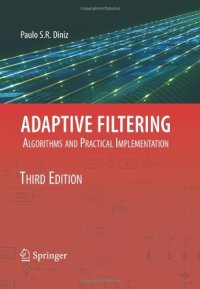
Ebook: Digital signal processing: An experimental approach
Author: Shlomo Engelberg (auth.)
- Tags: Signal Image and Speech Processing, Fourier Analysis, Image Processing and Computer Vision, Pattern Recognition
- Series: Signals and Communication Technology
- Year: 2008
- Publisher: Springer-Verlag London
- Edition: 1
- Language: English
- pdf
Digital Signal Processing is a mathematically rigorous but accessible treatment of digital signal processing that intertwines basic theoretical techniques with hands-on laboratory instruction. Divided into three parts, the book covers various aspects of the digital signal processing (DSP) "problem". It begins with the analysis of discrete-time signals and explains sampling and the use of the discrete and fast Fourier transforms. The second part of the book—covering digital to analog and analog to digital conversion—provides a practical interlude in the mathematical content before Part III lays out a careful development of the Z-transform and the design and analysis of digital filters.
MATLAB® and Simulink® are employed extensively to allow the reader to experience the beautiful mathematics underlying this important discipline, and to demonstrate the subject’s engineering relevance. The practical microprocessor-oriented parts of Digital Signal Processing are introduced with special reference to the ADuC841, a lab manual for which can be downloaded from www.springer.com/978-1-84800-118-3. These labs can be easily transposed for other microprocessors. Problems are provided at the end of each chapter and an electronic solutions manual is available for tutors.
Academic tutors of courses in DSP will find this book to be an invaluable aid in explaining the fundamental mathematics of digital signal processing and drawing out its significance for engineers. Electrical and computer engineers working in signals- and communications-related fields can use the book as a reference or for self-tuition and for deepening their understanding of the techniques they use. Graduate applied mathematics, electrical, electronic and computer engineering students interested in DSP will learn the underlying mathematics of a vital engineering discipline and how to apply it in practical laboratory situations.
A mathematically rigorous but accessible treatment of digital signal processing that intertwines basic theoretical techniques with hands-on laboratory instruction is provided by this book. The book covers various aspects of the digital signal processing (DSP) "problem". It begins with the analysis of discrete-time signals and explains sampling and the use of the discrete and fast Fourier transforms. The second part of the book — covering digital to analog and analog to digital conversion — provides a practical interlude in the mathematical content before Part III lays out a careful development of the Z-transform and the design and analysis of digital filters.